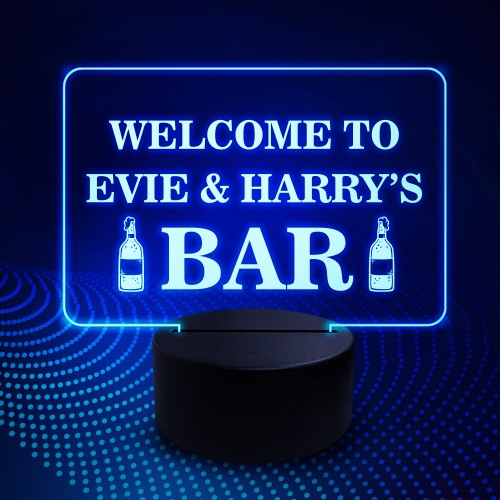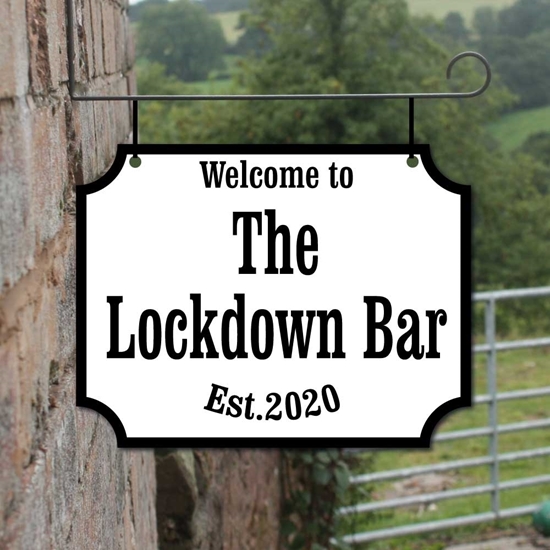New Suggestions On Selecting Bar Runners
Wiki Article
What Are The Differentiators In Bar Sign Sizes?
The size of bar signs can vary according to the purpose for which they are intended as well as their location and general design aesthetic. The following are the ways that different sizes impact bar signs with regard to functionality and design. Large Signs
Purpose: To serve as a focal point and draw attention.
It can be used for exterior signage, primary branding or feature walls.
The placement is typically located above the entrances, the walls or outside of the bar. It will attract patrons.
Examples include large neon signs, oversized vintage style signs, or huge wall-mounted signs.
2. Medium Signs
Uses: Give information or decorate the room without dominating.
Uses: Menu boards and directional signage.
Placement of signage: Ensure that the signage is in a visible location but not overwhelming.
For example, medium-sized chalkboards with daily specials or signs made of metal featuring the bar logo.
3. Small Signs
Goal: To provide precise details or subtle decorative elements.
Table signs are used to indicate table settings as well as small decorative objects or labels.
Placement Tables, shelves or display units that permit close-up view.
For example, table number signs, tiny framed quotes or menus for drinks.
Size Aspects
Visibility
Large Signs - Created to be easily seen from a distance, they are ideal for attracting the attention of passers-by and establishing your bar's existence.
Medium Signs They are perfect to balance visibility and effectiveness, and also providing vital information, while not overpowering décor.
Small signs are ideal for details and information which is visible. They can be placed near the table or eye level to improve the experience of the patrons.
Proportion
Large signs must be sized in proportion to the available space. This will avoid overpowering smaller areas. These signs are most for open and large areas.
Medium Signs: They work well in many interior spaces, allowing flexibility in the placement.
Small signs: Ideal way to add details, and are a perfect fit for small spaces.
Impact
Large-sized signs: They can make an impressive statement. they can also serve to create a brand. Bar signs are used to establish a particular tone.
Medium Signs: Strikes the perfect balance between décor and visibility and adds to the overall ambience while delivering vital information.
Small Signs: These signs add detail and charm that creates an incredibly rich and multi-layered visual experience.
Practicality
Large Signs require a significant mounting and is more costly as a result of the dimensions.
Medium Signs are more flexible when it comes to design, and are also easier to install.
Small Signs: Easy to replace and update They are ideal for dynamic settings like bars where the menus or promotions alter frequently.
Functionality
Large Signs: Primarily for visibility and attraction.
Medium Signs: They're functional as well as decorative. They provide essential information, but also enhance the aesthetics.
Small signs: They are mostly functional, providing specific information. They can be used to enhance the overall design of the room in a subtle manner.
Choosing the right size for bar signs is based on the purpose they are intended to serve and the layout of the space and the impact they want to have on customers. Signs will help to improve the atmosphere and operation of the bar if they are well-balanced. Check out the best personalised pub signs advice for blog examples including hanging pub signs, personalised outdoor bar signs, bar sign hanging, bar signs, indoor bar signs, personalised bar signs, personalised metal pub signs, personalised beer sign, personalised outdoor pub signs, personalised hanging bar sign and more.

How Does Bar Sign Customization And Personalisation Differ?
Customization and personalization of bar signs can be done to reflect the style, brand and ambience of a particular establishment. Below are the various types of bar signs or customization and personalization. Material
Customizable Materials : Wood metals, acrylic neon LED, chalkboard and vinyl
Personalization: Select items that are in line with the bar's theme and desired style, like rustic wood for a warm pub or elegant acrylic for a contemporary lounge.
2. The Design
Custom Graphics - Logos, illustrations and typography.
Personalization: Use brand-related elements or unique imagery to reflect the bar’s identity and ambience.
3. Size and Shape
Custom sizes From tabletop signage to large marquees for outdoor use.
Personalization: You can customize the shape and size to be suitable for specific locations and to satisfy specifications for branding. For instance, large letters can be used to create an eye-catching statement piece. Compact signs are perfect for small spaces.
4. Color
Custom Color Schemes for custom colors, which include Pantone match, RGB and custom finishes.
Personalization - Choose colors that are in line with the brand's image, the interior design of the bar, as well as the tastes of the target group. These could be vibrant and bold or subtle and elegant.
5. Lighting
Custom Lighting Effects Neon LED, backlit edge-lit projection, or any other.
Personalization: Choose lighting that will enhance the mood, ambience and visibility while adding a theme to your bar. For example, choose neon or LED lighting for a modern feel.
6. Text and Messaging
Custom Text: Bar name, slogans, quotes, menu items, event announcements.
Personalization: Design a customized message that resonates with customers, reflect the bar's personality and effectively communicate promotions or specials, as well as brand values.
7. Interactivity
Custom Interactive Features: QR Codes, digital displays or interactive projections.
Personalization: Use interactive elements that engage customers, increase participation and provide unforgettable experience. Examples include digital menu boards and interactive games, as well as board games that are interactive.
8. Mounting and Installation
Custom Mounting: Wall-mounted (hanging), freestanding (freestanding) or window-mounted.
Personalization: Select mounting solutions that are seamless with the overall design concept.
9. Specialized for events and seasonal seasons
Custom Themes: Holiday decorations themes, seasonal themes, or themed events.
Personalization: Update signage regularly to reflect seasonal shifts. highlight holidays or special occasions, creating an exciting, lively atmosphere for your patrons.
10. Brand Consistency
Fonts, logos, colors and logos are all customized branding elements.
Personalization - Make sure that there is consistency in all signage, branding and marketing materials in order to reinforce brand identity as well as build brand recognition. create an integrated visual experience for clients.
The Benefits of Customization & Personalization
Brand Differentiation: Stand out from competitors and create a memorable impression.
Brand Identity: Enhance brand identity by promoting customer loyalty.
Atmosphere Enhancement: Customize signage to reflect the bar's ambience and ambience, improving the overall customer experience.
Personalized signs can spur interaction, spark conversation, and create excitement.
By using customization and personalization the bar's owners can create distinctive signage that efficiently communicates information and helps build a visual, aesthetic and atmosphere of their establishment. Take a look at the top breaking news for blog info including gin bar sign, bespoke bar signs, bar sign outdoor, the staying inn bar sign, personalised home pub sign, hanging pub signs for garden, large pub sign, pub signs for garden, make a pub sign, bar sign hanging and more.

How Do Bar Signs Differ In Relation To Interactivity?
Bar signs can include different levels of interaction that can be used to interact with customers and improve their overall experience. These are the main differences between bar signs in relation to their interactivity. Static Signs
Static signs are a classic way to convey information. They don't have any interactive features.
Common types include: printed posters, or murals painted.
2. Digital Displays
Digital Signs: These signs can be updated in real-time with animated content and multimedia.
Interactivity: Touchscreens can include interactive games menus, interactive games, or other promotional content.
Benefits: Attract attention, provide dynamic information and boost patron engagement.
3. QR Codes
QR Codes on signs: QR codes are a great way to connect to menus, promotions, or social media profiles.
Benefits: Easy access to additional information such as promotions, news, or loyalty programs.
4. LED Screens
LED screens can be used for showing animated scrolling text or images.
Interactivity: LED screens allow patrons to interact, for example through menu selection or playing games.
Benefits: Attract attention to the content, provide an immersive experience and communicate information efficiently.
5. Projection Mapping
Immersive Experiences - Projection mapping converts surfaces to dynamic displays that offer interactive visuals and storytelling.
Interactivity - Guests are able to interact with projected elements such as interactive games or virtual experiences.
Benefits : Increase atmosphere, make unforgettable experiences, and promote social interaction.
6. Augmented Reality
AR is a type of enhanced reality that overlays digital information on the real world to allow for interactive experiences.
AR-enabled signage allows patrons the opportunity to interact with virtual components. For example they can look up cocktail recipes and play virtual games.
Benefits : Create an unforgettable experience, connect with your customers, and set yourself apart from your competitors.
7. Motion Sensors
Responsive Signage: Motion sensors detect movements and trigger interactive responses on the signage.
Interactivity: Signs may respond to patron movement through animations, changing content, or providing customized messages.
Benefits : More engagement, immersive environments, and surprising and delighting customers.
8. Social Media Integration
Online Interaction - Signs featuring hashtags and social media handles invite users to interact on the internet.
User-Generated Media: Inspire customers to share photos of signs through social media platforms. This can increase impact and visibility.
Benefits include a greater sense of community, an increase in brand awareness, as well as user-generated content.
9. Interactive Lighting
Dynamic Effects Signs made of neon or LED that have interactive lighting are able to respond to sounds, touch or motion.
Signs that interact alter their color, brightness, and patterns in response to patron interactions or environmental clues.
Benefits: Create a sense of ambiance, enhance the ambiance, and capture the eye.
10. Gamification
Interactive Games: Signs that include games that are interactive and challenge the user to keep customers entertained and encourage participation.
Reward: Give discounts or other rewards for players who meet challenges or win games.
Benefits : Increases time of stay. Foster social interaction. Promote repeat visits.
Bar owners who integrate interactive elements in their signage will be able to create an interactive experiences that draw customers' attention, enhance brand recognition, as well as differentiate them from the rest of a competitive market. View the most popular bar signs for home for more tips including staying inn sign, garden bar signs, design your own bar sign, personalised pub signs for garden, personalised sign for bar, make your own bar sign, personalised sign for bar, home made bar sign, personalised cocktail sign, make a pub sign and more.
